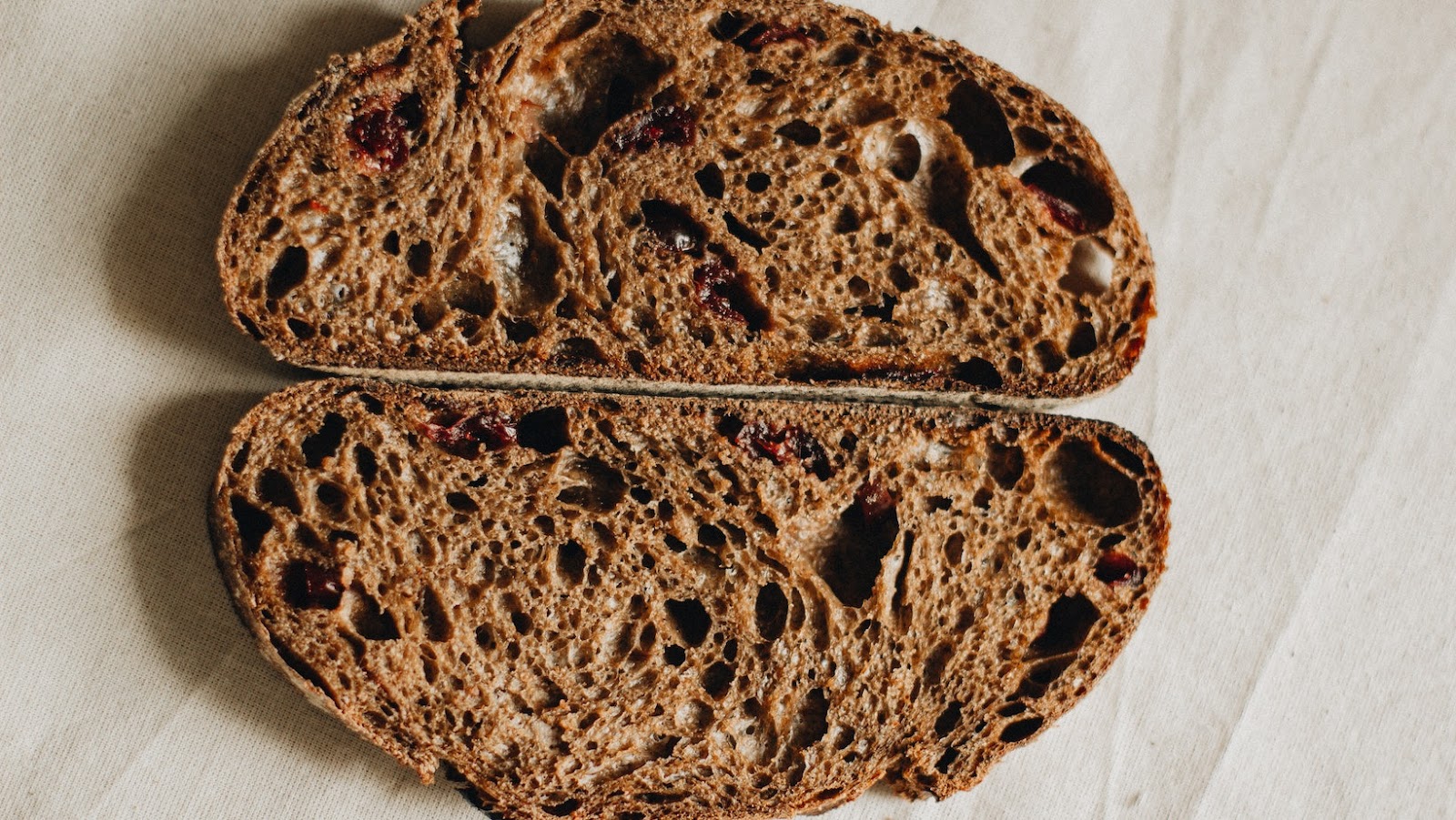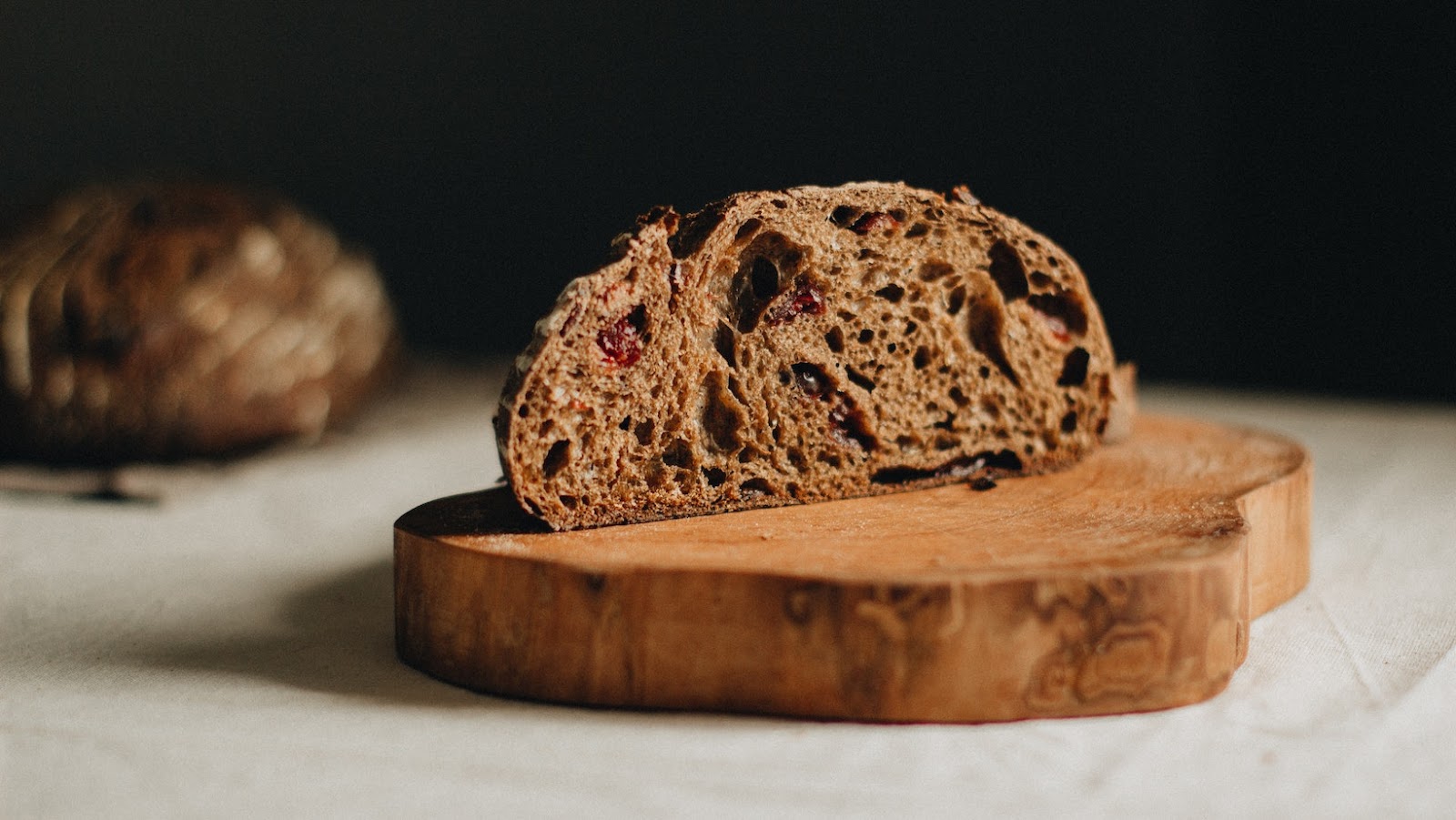Ingredients Used in Making Sourdough Bread
Sourdough bread is made with just a few ingredients. It is dairy-free and perfect for those with lactose intolerance.
Take a look at the key ingredients needed to make sourdough bread:
Ingredients | Quantities (in grams) |
Flour | 500 |
Water | 350-400 |
Salt | 10-15 |
Starter | 100 |
You can also add flavor and spices like garlic, rosemary, or cinnamon.
The fermentation process of sourdough bread can take many hours and even days. A slow fermentation gives better flavor and texture.
Chef Peter Reinhart says, “Sourdough is one of our oldest forms of leavened bread.” It’s delicious, healthy, and has lots of history.
Let’s hope making sourdough bread is easier than that new TikTok dance!
Steps in Making Sourdough Bread
To guide you through the process of making sourdough bread without dairy, we present the steps involved in making sourdough bread with four sub-sections: making the starter, preparing the dough, fermenting the dough, and shaping and baking the bread. Each sub-section is crucial in its own way, and by following these steps, you can make delicious and healthy sourdough bread at home.
Making The Starter
To make sourdough bread, the first step is to ‘Initiate the Starter’. Here’s how:
- Grab a jar and fill it with equal parts flour and water
- Mix until no lumps remain and let it rest at room temperature for 24 hours
- Discard half of the mixture and feed it with fresh flour and water in equal parts
- Repeat this every 12 hours for 5-7 days, or until it doubles in size within 4 hours
- It should have a vinegar smell and visible bubbles. It’s now ready!
Remember to use the starter at its peak activity – when it has doubled – and discard or share half. Sourdough bread has a long history – Napoleon even carried it in battle! Start kneading and get ready to enjoy the unique texture and flavor of homemade sourdough bread.
![Pexels-franciano-puhales-[ff]-13247705](https://newportmediainc.com/wp-content/uploads/2023/06/pexels-franciano-puhales-ff-13247705.jpg)
Preparing The Dough
Mix flour and salt in a bowl, stir with a fork until shaggy. Cover with a cloth for 30 minutes.
Knead the dough, be careful not to over-knead. Place in an appropriate vessel and cover. Store in a cool, dry place.
Start your starter culture – this affects flavor! Leave it overnight to develop gluten.
Sourdough has been made since ancient times. Legend tells of a soldier who mixed grain and water, creating the first sourdough loaf! Now, let’s begin fermenting your dough!
Fermenting The Dough
Fostering the natural bacteria in dough is super important when baking sourdough. This helps form gluten and creates the signature tangy flavor in artisanal bread. Here’s your 3-step guide to Cultivating Sourdough Dough:
- Let your flour, water, and yeast combo sit untouched for 12+ hours.
- Every 30 minutes over 2-3 hours, fold or knead your dough.
- Shape your dough into loaves and let sit on a floured surface overnight.
Remember to keep your workspace warm and humid! Also, using organic wheat flour can help boost microbial activity in your starter.
Pro tip: To get different flavor profiles, experiment with different fermentation and resting lengths. You’ll be the master of sourdough bread-making in no time! Get ready for a serious arm workout as you shape and knead your dough.
Shaping And Baking The Bread
Ready to transform your dough into a scrumptious bread? Here’s how:
- Heat up your oven! Preheat it and place a baking stone or Dutch oven for at least 30 minutes before you start baking.
- Prepare the dough: Place it on a floured surface. Fold each side to form a rounded shape.
- Create tension on the surface: Flip the dough onto an unfloured part of your work surface. Push down and drag towards you to create tension.
- Proofing: Put it in a bowl that’s been dusted with flour. Let it rest for 20 minutes to one hour, depending on the room temperature.
- Baking: Put the loaf in your preheated oven. Bake for 45-50 minutes until its crust turns golden brown and crispy.
- Cooling: After taking out bread from oven let it cool completely before slicing or breaking open.
Be gentle when shaping so you don’t affect fermentation. Check the dough often – rising times may vary!
For a great look, use a sharp razor blade or knife to score before baking.
Remember, sourdough is like a pet you can eat!
Common Questions About Sourdough Bread
To clear any confusion you might have about sourdough bread, we have answered some common questions for you. If you’ve ever wondered whether sourdough bread contains dairy or if it is gluten-free, we’ve got you covered. Additionally, we will be discussing how long it lasts.

Does Sourdough Bread Have Dairy
Sourdough bread is dairy-free. It’s made of just flour and water. But, some recipes may contain milk or butter. So, check the label if you’re lactose intolerant or have a dairy allergy. Some bakeries or manufacturers may add dairy products. Contact the maker if you’re not sure about the ingredients.
Also, don’t assume sourdough bread is gluten-free. Many recipes use wheat flour. To ensure your bread is dairy-free, make it at home with simple ingredients. Sorry, gluten-lovers – sourdough bread won’t magically get rid of gluten.
Is Sourdough Bread Gluten-Free?
Sourdough bread is a popular alternative for those who are gluten intolerant. It contains lower levels of gluten than other types of bread. However, it is not completely gluten-free. The fermentation process used to make sourdough can break down some gluten proteins, making it easier to digest for those with mild sensitivities. But, it’s not safe for those with severe intolerance or celiac disease.
For mild cases, sourdough can be a safer option. But, it’s important to note that the level of gluten can vary. So, double-check the ingredients and nutrition info before purchasing.
Sourdough has been around since ancient Egypt. In the middle ages, people used it as currency due to its value as a reliable food source and long shelf life. Now, it’s popular again due to its unique flavor profile and potential health benefits. But, like most relationships, the longer you keep it in the fridge, the less satisfying it becomes.
How Long Does Sourdough Bread Last?
Sourdough bread can be kept for a week if stored properly. Wrap the loaf in plastic and keep it at room temp for 2-3 days. Then store in fridge to avoid mold. To refresh stale sourdough, sprinkle water and reheat in oven or toaster.
Life of sourdough depends on factors like temp, humidity and initial baking. Furthermore, its dense texture and lack of preservatives mean it dries out quickly.
Tip: Freeze slices of sourdough for long-term storage. Toast from frozen for maximum freshness.





